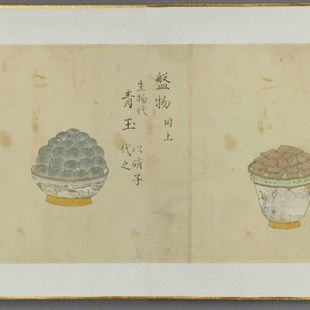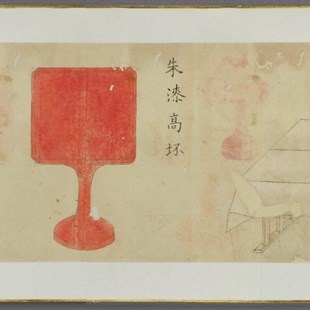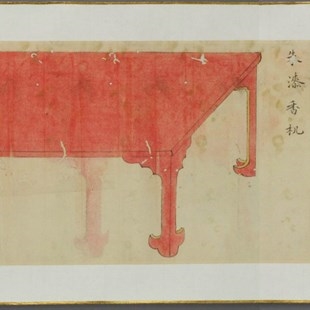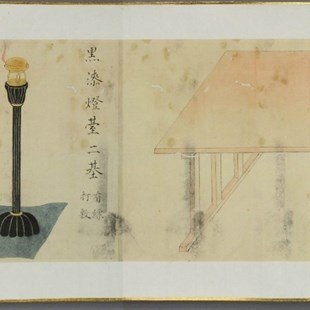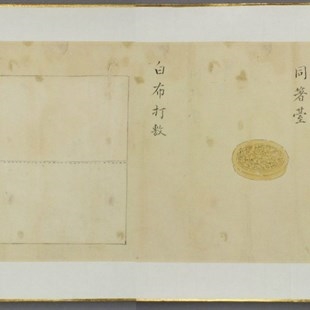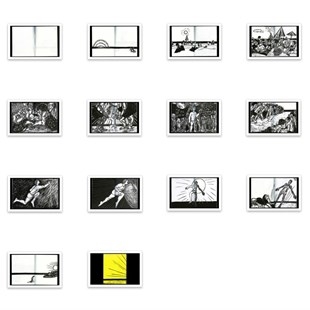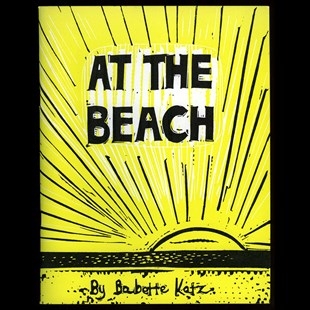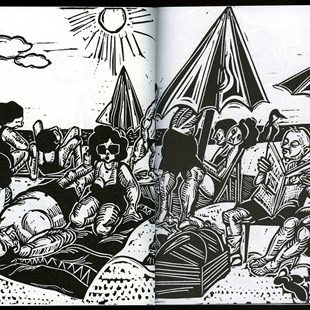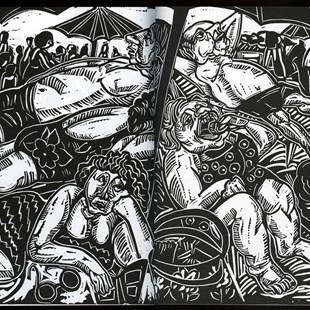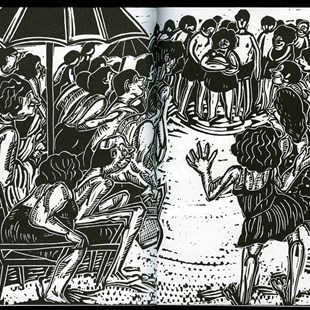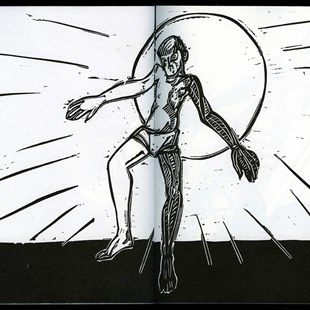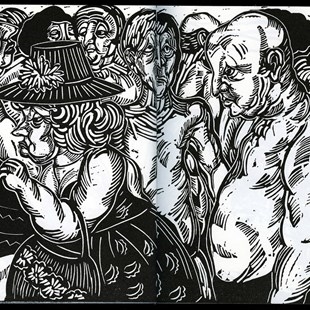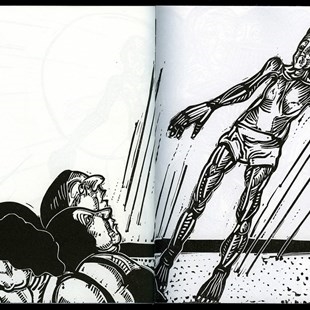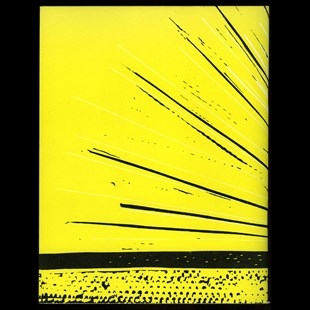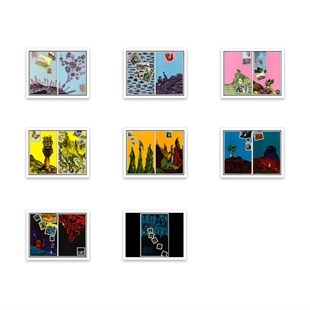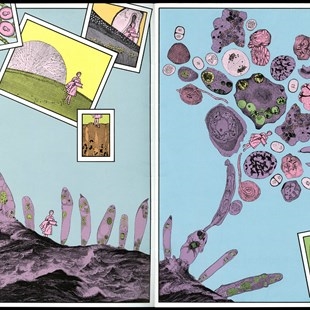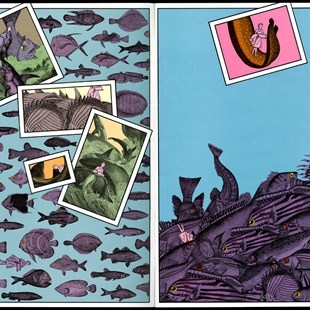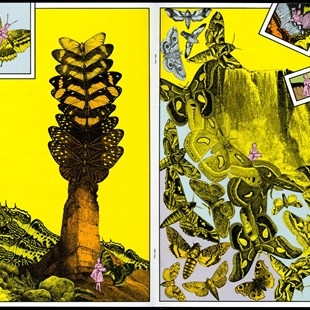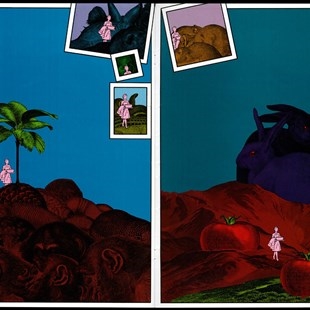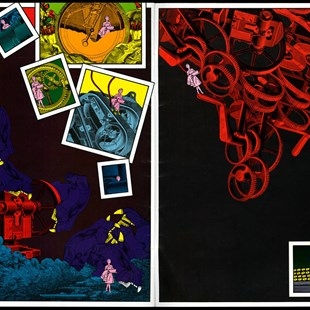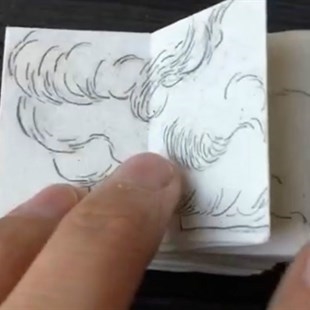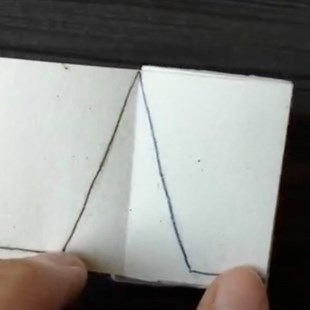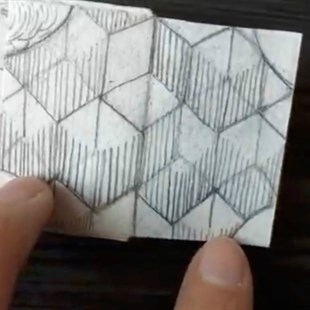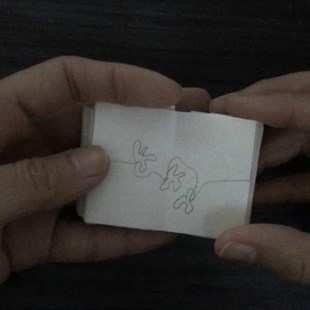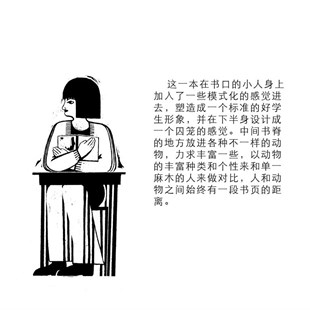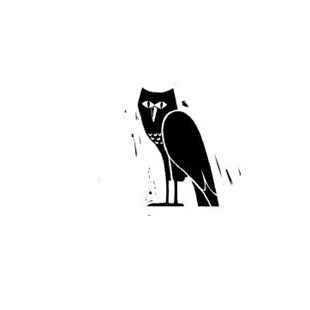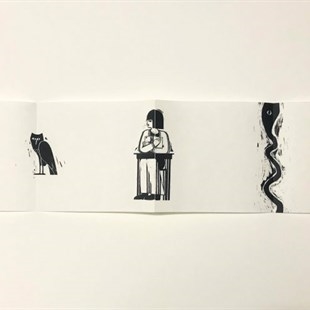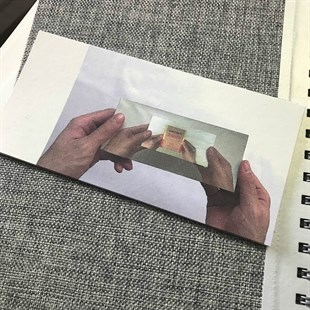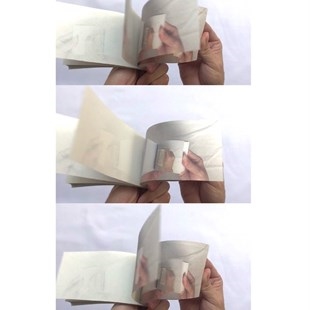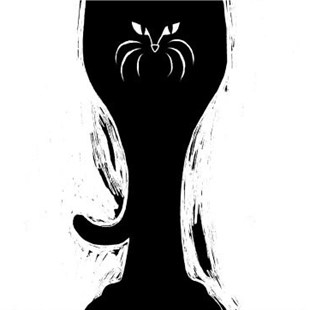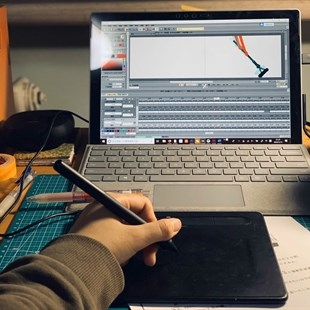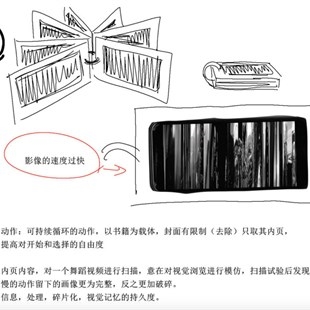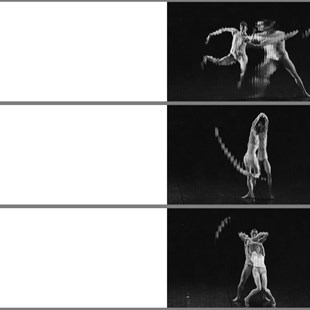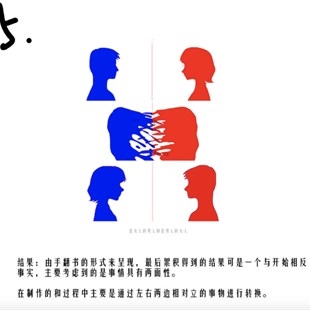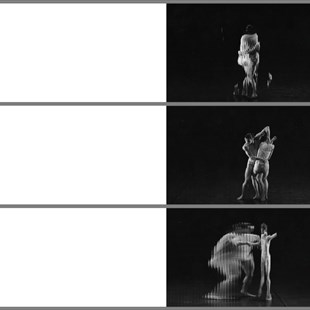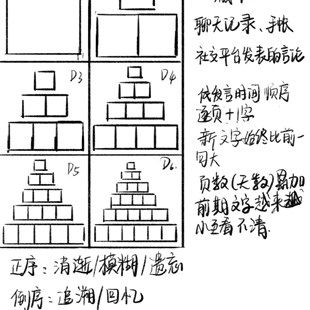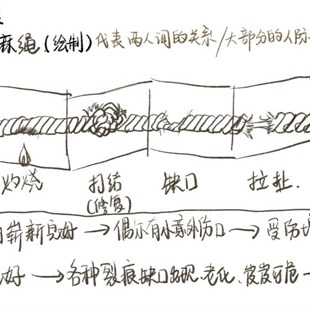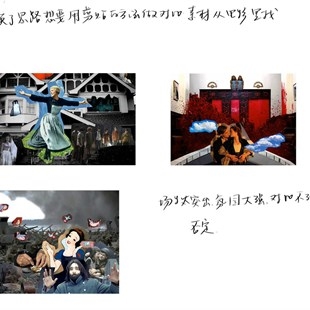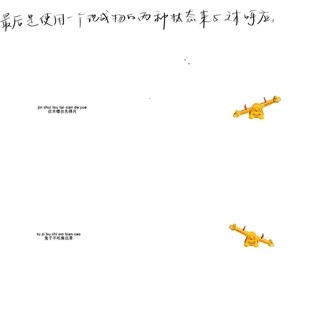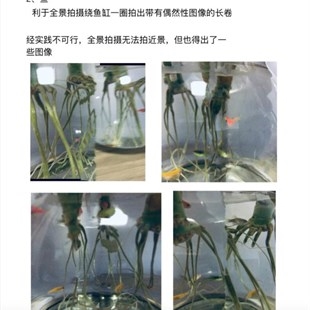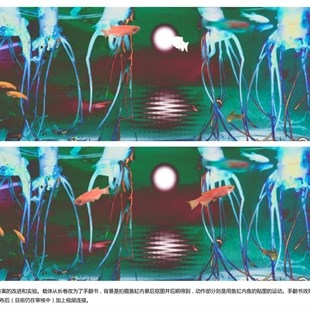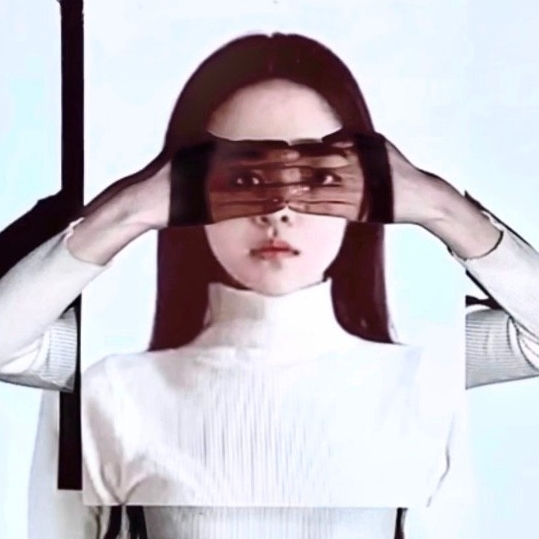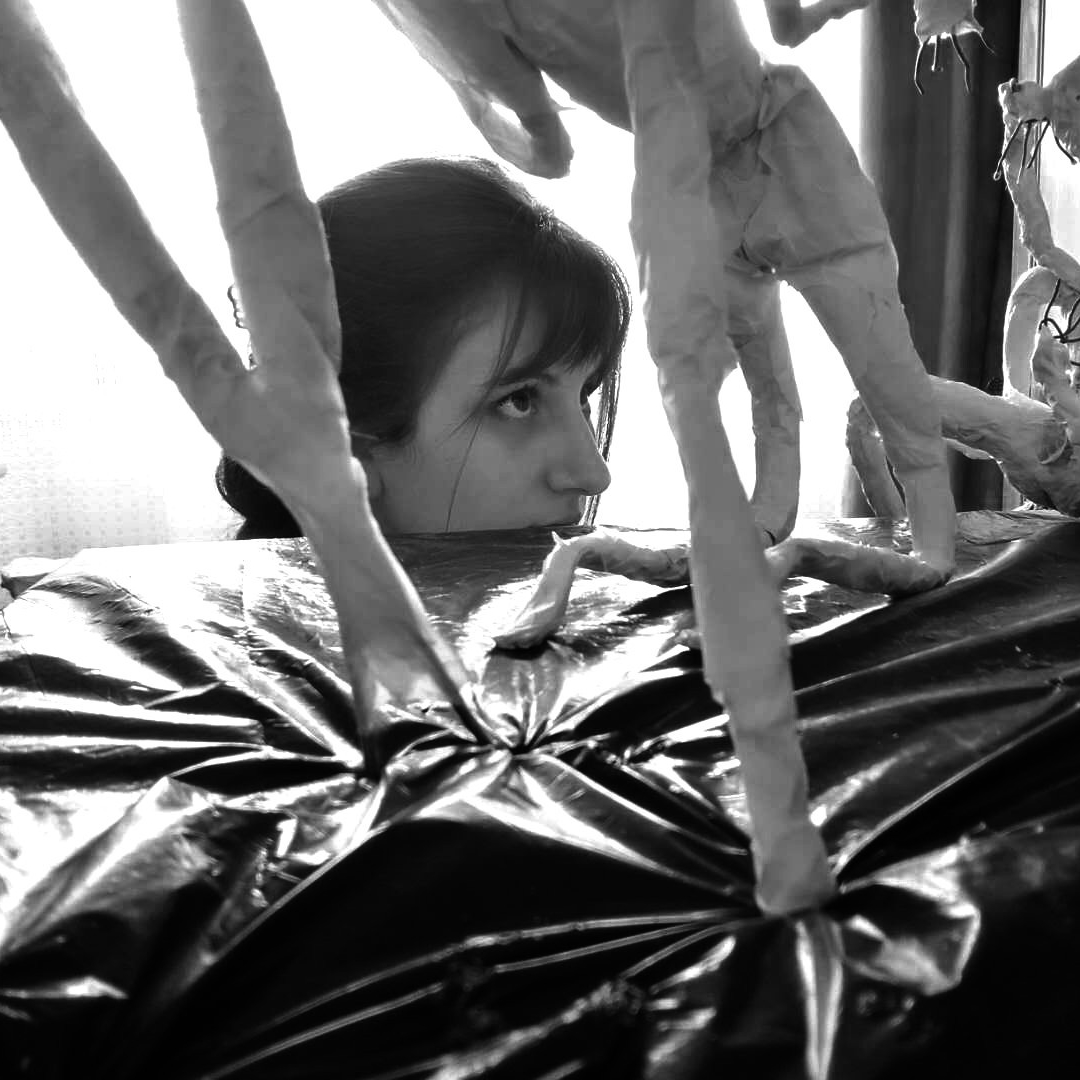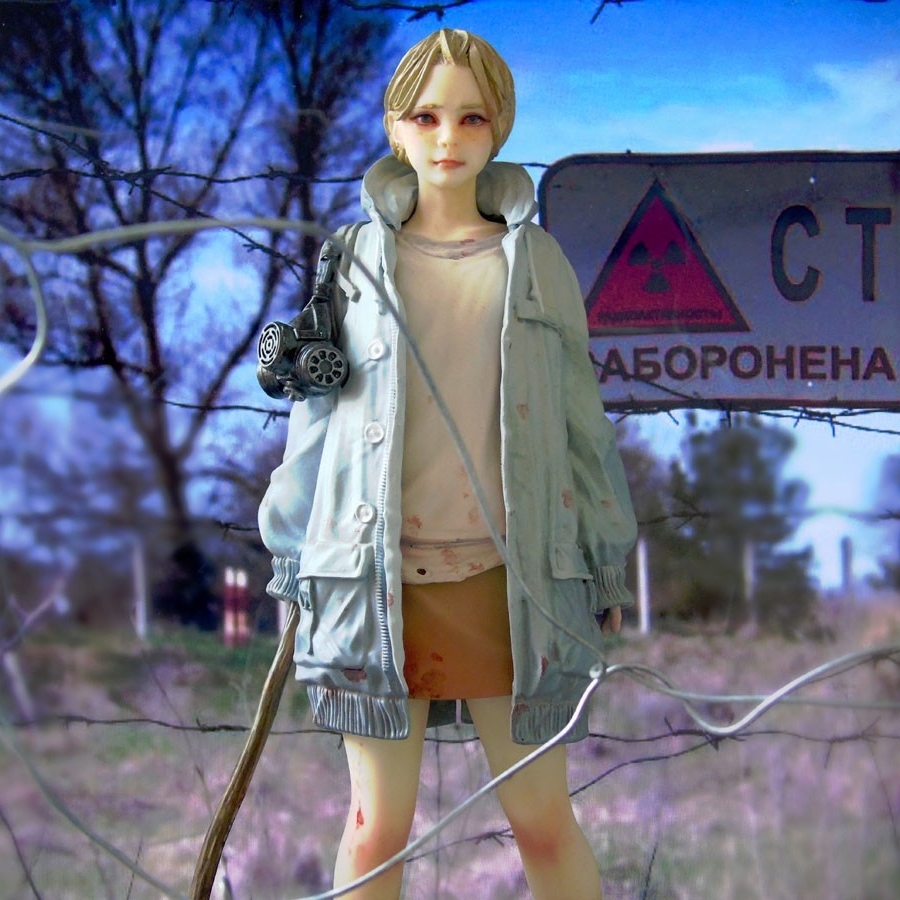
Editor’s note: Recently many colleges and universities have started “online classes” from a national perspective. Through direct observation of online class status, we find that the significance behind it is undoubtedly rich: do online classes bring new opportunities or challenges? How have art schools conducted online teaching? How could the art courses that emphasize technical training and face-to-face communication adapt to the new situation? What impacts will it bring to the traditional education model?
In this session, CAFA ART INFO introduces the “Book Design” course conducted by Tan Tan from the Printmaking Department of CAFA. “Book Design” is one of the core courses in the Fifth Studio of the Printmaking Department. There are courses on “Basics of Illustrations” and “Fundamental Education on Printmaking” before moving onto this course and it later connects to graduation creation. The course is mainly divided into three stages: “Continuous Reading”, “Renovation of Books” and “Conceptual Library.” Combined with case analysis and creative practices, this course features “a silent teacher and lectures from students.” So what changes have occurred in the teaching method on the online platform and how do these changes happen? They share the first stage of this course with us on how to construct art through “continuous reading.”
Teaching Notes
Edited content of interview with Tan Tan

I am very happy to share with you the "Book Design" course for the junior students of the Fifth Studio of the Printmaking Department through CAFA ART INFO and I’d like to exchange experiences and thoughts about online teaching. After reading the interview questions from CAFA ART INFO, I generally compare traditional teaching with online teaching. I did not answer the questions one by one, but I have written down the advantages and disadvantages of the online teaching that I have experienced. They always complement each other, so after each advantage I point out the corresponding shortcomings and vice versa. Any reference to “teacher” in the wording just represents my personal experience and it is open for everyone to exchange and discuss:
First of all, the most obvious advantage of online teaching is that there are traces left in the teaching process. They include four categories. In order to facilitate teaching and the students’ review, teachers will share the structured and precise content of the teaching coursework to the WeChat student group or publish it through the online platform. This is the first form of trace. In addition to the fixed teaching content, teachers' comments and correction responses to students’ works will also leave traces. This is the second type of trace, as in traditional teaching, this part is often oral and unrecorded. The communication between students and teachers in the online classroom is traceable. This is the most different aspect from the traditional teaching methods. In the traditional teaching process, most of the communication between teachers and students is that students take notes and sketches to discuss with the teacher. Finally traces that are left are the operation results. The fourth type of trace is the student’s homework process. Whether it is online teaching or traditional teaching, it cannot be separated from homework assignments and students’ digestion and practice of the content they have learned in the classrooms. Online classroom requires students to upload each step of their homework process for teachers to supervise and guide, then all the uploaded content will become a traceable sign. The retention of the homework process is extremely valuable, because to a greater extent, it shows the thinking process of the students and the effort used to overcome the difficulties to achieve the goal. The above four types of traces are of great help whether it is to summarize and reflect on the teaching process of teachers, or to review and help the students learn by themselves. These traces are records of the “past” and they also provide guidance for the “future.”
However, from the actual operational perspective, if these traces are not manually edited, they will still be scattered fragments. If you want these traces to be well kept and to make these traces really work, you need to spend a lot of time to edit, organize, adjust and assimilate the fine essence. Whether it is to organize texts or take screenshots, it takes a lot of time and energy for teachers and students. Of course, if compared to its value, this is a necessary effort.
Secondly, “orderly” is a major feature of online teaching, I think this is also two-sided. Teachers should organize their courses, write coursework accurately in an orderly manner, respond to students’ homework and provide suggestions in the same way. Students formulate their ideas in an orderly manner, and organize the sketches and notes that need to be uploaded. This “organization” seems to have more positive effects for teachers, while for students, I think it is necessary to look at it dialectically.
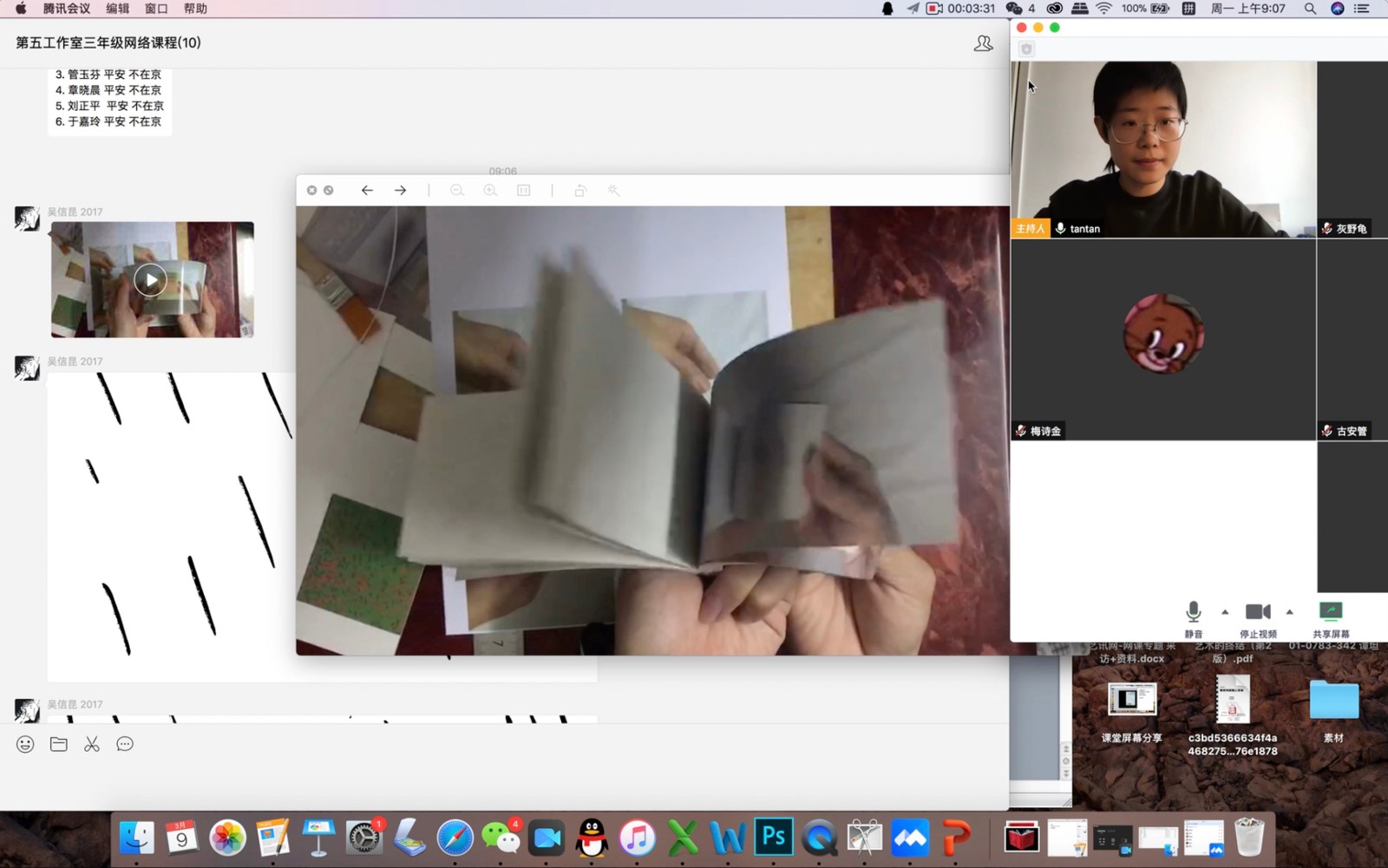
First of all, for myself, in the traditional teaching process, there will be a lot of maneuvers. If I accidentally talk on a topic with the students, I will immediately find a targeted case in the laptop to analyze, or I take an original work from the studio's collection to discuss. Usually these valuable analyses and discussions have not been recorded. Through online teaching, there are more restrictions on the environmental conditions and time constraints, so that teachers are encouraged to combine the teaching experience of previous years as much as possible, comprehensively and meticulously considering all the possibilities of "maneuvering" and repeatedly measuring these cases that may be used as objects of analysis to prepare comprehensively and add details to the teaching coursework. This repeatedly adjusted coursework must have been well organized and will play a great role in the future teaching plan.
For students, why did I say that this kind of "organization" needs to be dialectically looked at? This is because our research field is in the category of art. To write a structured artist statement, students often use a lot of professional vocabulary or inappropriate words to accumulate an effect in the text. In order to write a structured, seemingly thoughtful and profound text, they might lose the original intention of creation, which is not uncommon. The process of artistic creation is more complicated and the text description cannot replace the work. An art work has many parts that cannot be described and summarized in words. If these parts must be expressed in words, it will inevitably distort the original intention. The old saying that “speaking sounds better than singing" or the result of “speaking better than painting” is not what we expected. Is this kind of “consecution” spontaneously generated by students, or is it forced? Will it promote or hinder student creation? I think we should look at it dialectically.
Thirdly, due to the limitation of conditions, the lack of learning materials is an obvious shortcoming in online teaching. The learning materials I mentioned here refer to the original works of art. For the “Book Design” course for junior students, it is a great pity that they cannot hold the original books by hand to review and research them. Book art is an art that is carried out in the course of reading. The charm of book art is reflected in the continuous review and repeated aftertaste of the works. As far as the current conditions are concerned, I can only provide students with scanned pictures of the inner pages of the works. The best case is that I have the work in case at home (most of the collections are stored in the CAFA studio). I have showed it to students in a video, but even so, the students cannot really feel the original work and cannot experience the charm of the work.
Everything has pros and cons, although information is limited, we cherish the only information we have. Just like people who live near the clear river and green hills, they often turn a blind eye to them and always try to get out. Sometimes there is too much information at hand, but we did not cherish it. Now the conditions are limited, just take a scanned picture of a work and work hard to study it. In this way, even if the information is limited, you can calm down and study thoroughly. For students, the effect is much better than glancing over things hurriedly.


The last point, which is also very practical, is that the attendance rate of online courses is more guaranteed. During the pandemic, under special circumstances, students are not allowed to return to school and they can only take online classes at home, meanwhile they cannot go out to do anything else. This leaves no room for absence or leave. Both students and teachers save their time on the road, as long as they sit in front of the computers and take classes, which greatly reduces the possibility of being late. Individual students are habitually late in the traditional teaching classroom, or are absent from work due to various reasons, which leads to the problem of partial listening and unable to keep up with the progress, all of these can be solved easily.
On the other hand, across screens, students' input will definitely be reduced compared to on-site teaching. This is also the most frequently criticized point of online teaching: the lack of “presence.” Including the aura of the environment and the aura of people, the lack of “presence” leads to the lack of "attractiveness". The concentration of students in the classroom, the degree of devotion to completing homework and the sense of tension will be greatly reduced. The interactive influences between teachers and students, among classmates have also been greatly weakened. This lack of aura also leads to a significant “delay” in the communication between teachers and students. For the indirect communication, the suggestions provided by teachers to students may not be consistent with the students' immediate development, and students might not have a timely response to the guidance by teachers, resulting in weak communication and misunderstanding.
The above points are my summary and experience in the teaching process of the first few weeks of the new term. It is the safest and most secure way to use online teaching during the pandemic. The guarantee of the teaching effect requires both teachers and students to redouble their efforts. The guiding role of teachers is particularly important and critical.
Introduction to the Online Classroom
Although illustrations have independent artistic value, they are mainly used in publications. Therefore, understanding and designing books as the carrier of illustrations is one of the teaching contents of this studio. The undergraduate course involves the design and production of art books. The production of such books belongs to art rather than commodities. It is about the art classification of Book Design. The course focuses on explorations in the artistic expression of books.
“Book Design” is one of the key courses of the Fifth Studio of the Printmaking Department. Following the courses of “Basics of Illustrations” and “Fundamental Education on Printmaking”, this course later connects to the graduation creation. It lasts for ten weeks and it is the last major course for junior students.
Due to special circumstances this year, the curriculum setting has changed accordingly, it was adjusted to adapt to the constraints when students can conduct online learning and make use of the existing materials at home to complete practical topics: “Continuous Reading” (Weeks 1-4 ), " “Renovation of Books” (Weeks 5-8 ) and “Conceptual Library” (Weeks 9-10).

Teaching Arrangements
The first stage: from the first week to the fourth week—“Continuous Reading”

Content: The contents of the books can continue over time and it takes more time to appreciate books. The main difference between books and other easel paintings is that it takes time to read through to fully understand the work. Under such conditions, the coincidence between the action of reading itself and the theme of the work has become the starting point for artists to create.
Assignment: Through the completion of an art book, exploring the possibility of the accumulation and the order of reading through the themed expression.
The second stage: from the fifth week to the eighth week—“Renovation of Books”
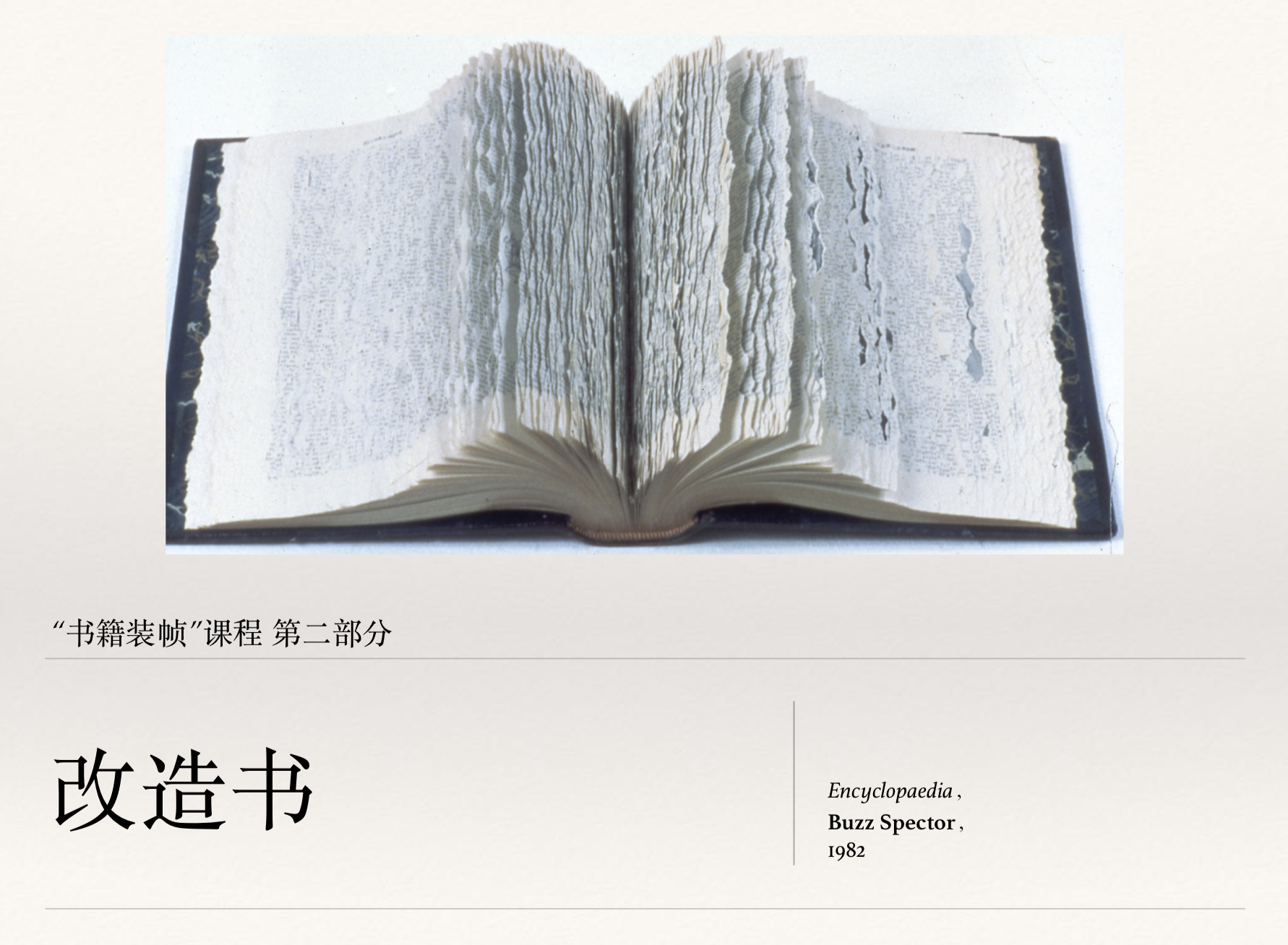
Content: The book itself is a cultural symbol. Different types of books carry different concepts of consciousness. Each book is a combination of its attributes, content and format, resulting in its uniqueness. To transform a book, it is necessary to take advantage of its uniqueness (attributes, content, layout) of the original book and bring about a new relation with other form or content.
Assignment: Transform two existing books and express the new content and ideas related to the original book through the use of physical materials and the remodeling of the structure.
The third stage: from the ninth week to tenth week—“Conceptual Library and Archives"

Content: The fundamental idea of a modern library is openness, rather than taking knowledge as private property. The storage and display methods of a library and the space setting of the reading room affect the spread of ideas, so that the library design, conceptual design of archival storage, and art works are not based on functionality but on art concepts. The design of the reading installation has become an important subject in the art of books.
Assignment: Create a sketch of the conceptual library or a sketch of the conceptual reading facility.
Silent Teacher with Lectures from Students—Shared Experience of Teaching Methods of Book Design Course during the Pandemic
In previous years, teaching was mainly carried out by combining case analysis with creative practice. This year, this framework is basically used, but in the case analysis part, the teaching method has changed significantly. The biggest problem with online teaching is that it is difficult for teachers to keenly grasp the level of students' input and content control. Taking the method of appreciating and analyzing the cases provided by the teachers, the course can fully arouse the enthusiasm of the students, effectively improve classroom input and concentration, and enhance thinking activity. Of course, the purpose of this is not just to increase the tension of the students. Let students comment on the works which can mainly achieve the following three goals:
1. Using students’ analysis instead of teacher’s lecturing can enable students to actively study the case. Compared to passive acceptance, students can have the opportunity to explore the case more deeply and have a deeper impression of the case.
2. Writing texts to evaluate works can exercise students' rational thinking. This process will help students construct and reflect on their own creations in the same rational way.
3. Discover the new value of the work. In the past, teachers explained the work from their perspectives year after year, it was inevitable that the views were outdated or missing. Students and teachers have grown up in different eras with diversified concepts. Let students comment and they will discover a new value in the work. This is a kind of reverse teaching and it is also very beneficial for teachers.
As a guiding introduction, in the case analysis section, I have listed a few key issues and displayed them on the shared screen in the classroom, so that students could read the work and think while looking at the issues. In the class, I also explained to the students that these four questions are the framework of the text. Students with strong writing skills do not have to answer questions one by one as it is also possible for them to write a smooth review. But for those who don’t know where to start it is easier to answer the questions first. As exercises increases, they no longer need to rely on these questions.

In the session of comment exercises, pictures of the work and comments are displayed on the shared screen
As I mentioned earlier, this “Book Design” course is divided into three topics. The subject of the first stage is “continuous reading”. The main difference between book as an art medium and other easel paintings is that it occupies the two dimensions of space and time. From the perspective of time, it takes time to read the work completely, the meaning and value of the work can be presented in a page-by-page process. At the same time, the content of the work itself can also be a record of time. From the perspective of space, a book is a “flipable thing”, so this means that as creators, the book should be regarded as a physical object occupying space and we can also use a formal space such as “book” to carry the content of another space.
Text and Photo Courtesy of Tan Tan and Students, edited by Zhang Yizhi/CAFA ART INFO
Edited and translated by Sue/CAFA ART INFO


